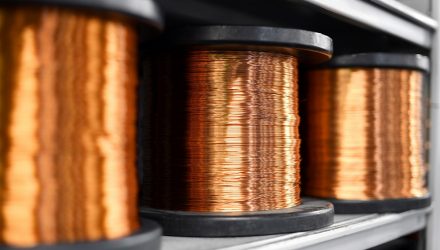Conversations about renewable energy adoption and related investment theses are often dominated by electric vehicles, solar and wind. As a result, some investors overlook the importance of shoring up electrical grids. Doing so makes the energy transition smoother. It’s also a matter of national security. This is because threat actors can hack grids, wreaking havoc on economies along the way. There is imminent need to bolster electrical grids. Related expenditures aren’t cheap, but they are necessary. That could be positive for ETFs such as the KraneShares Electrification Metals Strategy ETF (KMET).
KMET is a futures-based ETF that provides investors with exposure to a basket of six metals. These metals are essential in the renewable energy transition. Some of the metals tracked by KMET are also highly relevant in electrical grid enhancements and spending forecasts.
Electrification Metals ETF KMET Exposures
Potentially adding to the allure of KMET for patient investors is that more governments are waking up to the need to bolster grids. These need can relate to either climate change or national security purposes. The related spending outlook, which includes expenditures on the likes of aluminum, copper and other commodities, is compelling.
“Achieving all national climate and energy goals will require adding or replacing 80 million kilometres of power lines by 2040 – an amount equal to the entire existing global grid – according to a detailed country-by-country analysis carried out for the report,” wrote the International Energy Agency (IEA). “Major changes to how grids operate and are regulated are also essential, while annual investment in grids, which has remained broadly stagnant, needs to double to more than USD 600 billion a year by 2030.”
The intersection of KMET metals and electrical grid spending extends beyond national security. The importance of that issue is not to be diminished. With adoption of renewable energy and electric vehicles rapidly expanding, electrical grids are coming under newfound strain.
Translation: Updates are essential to encourage more consumers to believe in the reliability of solar power and charging their electric vehicles at home.
“Meanwhile, countries are adding renewable energy projects at a fast rate – requiring more power lines to connect them to electricity systems and high-functioning distribution grids to ensure reliable supplies for end customers. This includes the digitalisation of distribution grids and enabling more flexibility through demand response and energy storage,” added the IEA.
For more news, information, and analysis, visit the Climate Insights Channel.

